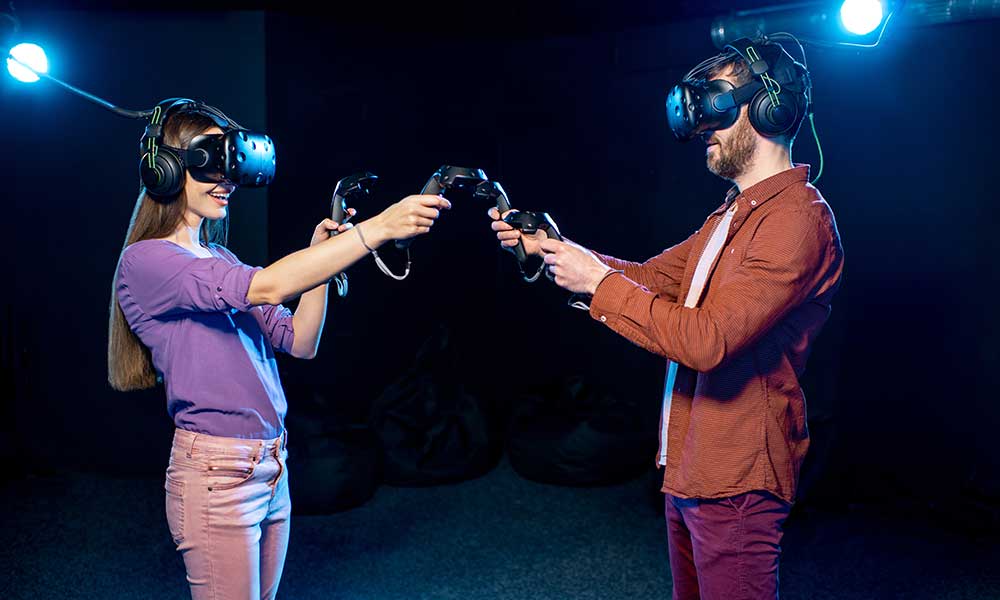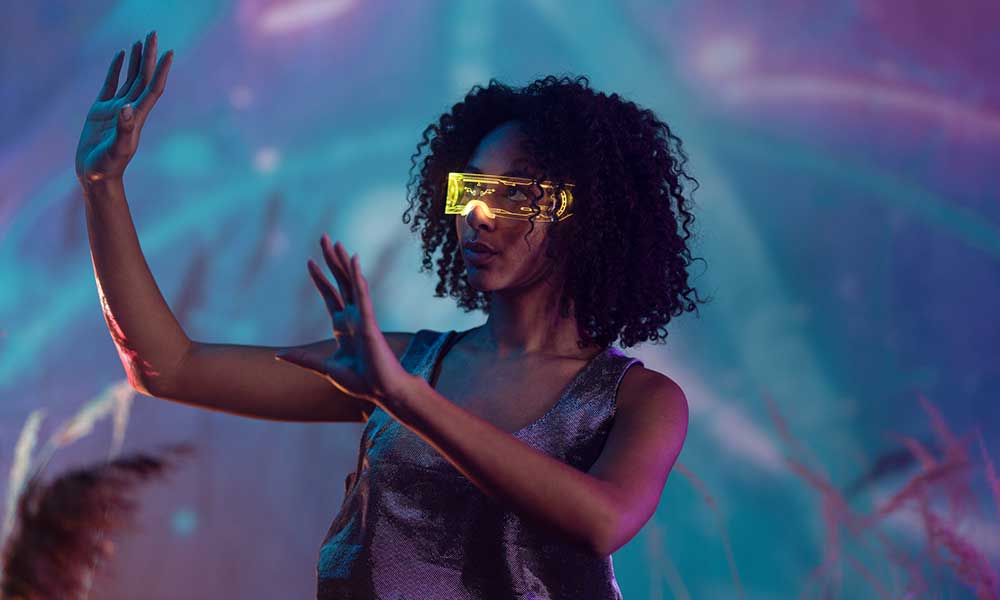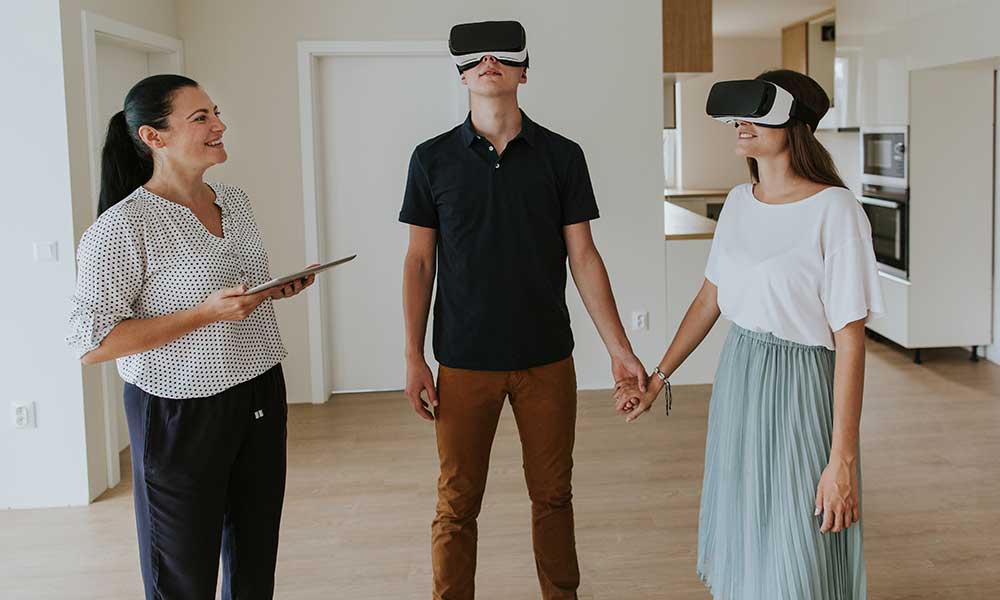Introduction
If you’re like most of us, the idea of virtual reality has probably taken you on a wild, sprawling journey through space, time, and your imagination. From science fiction books to futuristic movies, virtual reality has been wondrously portrayed for decades as a revolutionary technology—one that would give us the power to escape our physical limitations and experience an entirely new reality.
But what if we told you that the future of virtual reality is already here? If you’ve ever had any interest in how this groundbreaking technology came to be, then you’re in the right place!
The history of virtual reality is rich and complex—and full of fascinating twists and turns. In this article, we’ll take an in-depth look at the evolution of VR from science fiction concept to game-changing reality. Ready? Let’s get started!
Science Fiction Inspiration for Virtual Reality
It’s a fascinating journey from the words of a science fiction novel to the rapid development of virtual reality technology. The early days of virtual reality began in 1935 with Stanley G. Weinbaum’s science fiction story Pygmalion’s Spectacles, which featured a pair of goggles capable of producing immersive audio-visual experiences for its user. Decades later, VR would make its return in Neal Stephenson’s 1992 science-fiction novel Snow Crash, in which he coined the term “metaverse”—a metaphor for cyberspace as an immersive 3D environment.
The idea that ordinary individuals could explore an alternate universe from their own has been around since Weinbaum wrote Pygmalion’s Spectacles. Science-fiction novels have always been a medium for futuristic imagination, and it follows that when the time was right, VR and AR applications were waiting to be explored. Fast forward to today and we see just how much progress has been made on this technology in such a short amount of time.

The Early History of Virtual Reality
So, what do virtual reality technology, a 1930s science fiction story, and the 1960s have in common? They all helped to create the world of virtual reality we know and love today.
It all began in 1957, when Morton Heilig invented the first VR technology—a headset that could both sense body movements and project 3D images and sound. While it was a remarkable invention at the time, virtual reality as we know it hadn’t yet been born.
This changed when sci-fi writer Stanley G. Weinbaum introduced the concept of virtual reality in his 1930 story “Pygmalion’s Spectacles”. This mind-bending story explored an immersive form of entertainment where viewers interacted with simulated environments—something that sounded like absolute science fiction back then.
Only a few decades after this story was published did work begin to create the headset Heilig had envisioned in 1957. The first headset was created in the 1960s, although it would take many more decades before this technology truly entered mainstream culture. But that’s a tale for another day!
What Is the Difference Between Augmented and Virtual Reality?
What’s the difference between the two? Well, the main difference between AR and VR is how immersive the technology is. Let’s break it down.
Augmented Reality (AR)
Augmented reality gives users an enhanced version of reality, with computer-generated images superimposed onto a user’s view of the real-world. AR uses a real-world setting and adds to it by syncing both the digital world and physical world. With this tech, you don’t need a headset — all you need is a smartphone or tablet with a camera and an AR app. It basically layers digital images over real-world objects or environments! Nowadays, you’ve probably seen this type of technology used in popular smartphone games like Pokemon Go and Harry Potter: Wizards Unite.
Virtual Reality (VR)
On the other hand, virtual reality is completely virtual; it immerses its users in a completely simulated environment which has been created using computer technology. To access VR, you do need to purchase a headset device such as an Oculus Rift or HTC Vive. This makes sense since they are more sophisticated than AR apps. As opposed to AR where it enhances both the virtual and real world; VR just enhances a fictional reality, so it’s only ever seen through the headset device that’s worn!

Types of Virtual Reality Experiences
It’s truly incredible when you consider the sheer variety of virtual reality experiences you can have today. From exploring distant galaxies to touring the bottom of the sea, you can do it all with a VR headset!
Different types of virtual reality experiences
But why is there so much variation in VR experiences? Well, that’s because there are several different types:
- Non-immersive VR: This type of VR uses a peripheral device like a console or keyboard and presents a simulated environment on a monitor. This type is ideal for educational and gaming purposes.
- Semi-immersive VR: This type of VR uses projections to present 3D images and video in enclosed environments like domes or caves. Users have limited mobility but have complete headset coverage for a more realistic experience.
- Fully immersive VR: This type of VR uses wearable devices like head mounted displays, motion trackers, position trackers and gesture recognition systems to create an immersive environment and give users complete control of their movement through their entire body rather than just their hands.
Whether you’re exploring outer space or getting lost in an alternate universe, virtual reality allows even non-tech savvy people to experience astounding things that could never be experienced in real life—all from the comfort of your own home!
Examples of Virtual Reality in Everyday Life
You might not realize it, but virtual and augmented reality are a part of your daily life. There are countless examples you can point to, like the app Pokémon GO, or any VR game that you play on your Playstation.
But there are even more examples to consider as well. For example, medical students practice surgery on virtual patients in virtual operating rooms, or astronauts use VR simulations to train for space travel.
And beyond that, many people spend a great deal of their time interacting with artificially created worlds and avatars—has anyone ever told you about Second Life?
It’s hard to believe sometimes that these scientifically advanced technologies have only been around for generations—but the truth is, VR has been a concept since the 1800s. It’s amazing to see how far it has come since then!

The Potential Impact of Virtual Reality on Society
Virtual Reality technology has been on an incredible journey since its invention in 1957 by Morton Heilig. It has grown exponentially in recent years and has already been adopted by businesses in the travel industry, with the potential to have a major impact on society.
While the entertainment industry has been quick to adopt virtual reality, it is clear that this technology has the potential to do much more than just provide hours of enjoyable experiences. By leveraging virtual reality, businesses are able to create immersive experiences that can transport users to distant locations and help them understand products better before they purchase them.
Furthermore, Virtual Reality can also be used for educational purposes, allowing users to explore different environments in order to gain a more realistic understanding of various topics. This could include taking a virtual tour of ancient cities or visiting historical monuments without ever leaving home!
The possibilities of Virtual Reality are seemingly limitless, and as it continues to evolve and become more accessible, we may see it play an even bigger part in our lives in the years to come.
Conclusion
Indeed, there’s a seemingly infinite amount of potential for the application of virtual reality technology. From virtual classrooms to gaming, shopping and beyond, virtual reality is only just beginning to take off.
The evolution of virtual reality is proof that science fiction does, in fact, become reality. And, as technology continues to develop, the potential for the application of virtual reality will only continue to grow. It’s exciting to think of the possibilities that virtual reality could bring – the future is bright!































